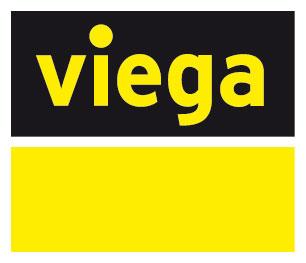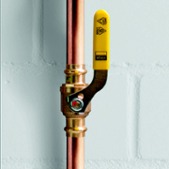Viega USA
Select country
- AAlbania
- Algeria
- Australia
- Austria
- Azerbaijan
- BBahrain
- Belarus
- Belgium
- Belize
- Bosnia
- Brazil
- Bulgaria
- CCanada
- Caribbean Islands
- Chile
- China
- Croatia
- Cyprus
- Czech Republic
- DDenmark
- EEcuador
- Egypt
- Estonia
- FFinland
- France
- GGeorgia
- Germany
- Greece
- HHongkong
- Hungary
- IIceland
- India
- Indonesia
- Iraq
- Ireland
- Italy
- JJapan
- Jordan
- KKazakhstan
- Kosovo
- Kuwait
- LLatvia
- Lebanon
- Lithuania
- Luxembourg
- MMacedonia
- Malaysia
- Malta
- Mexico
- Moldavia
- Montenegro
- Morocco
- NNamibia
- Netherlands
Albania
Viega Head Office Croatia
Trg Ante Starčevića 910410 Velika Gorica
Croatia
- +385 (1) 622 48 79
- +385 (1) 622 48 79
- info@viega.hr
Algeria
DEED S.A.L. NORTH AFRICA OFFICE
Kaslk, Etoil Building, 3rd FloorP.O. Box 214 Zouk Mikhael
Lebanon
Mr. Nicolas Khalifeh
- +961 9 22 24 94
- +961 9 22 24 94
- info@deedsal.com
Australia
Viega Pty Ltd.
Suite 102, 8 Century CircuitPO Box 8270 Baulkham Hills, NSW 2153
Australia
Contact person: Phil Jackson
- 61 488 7784 55
- phil.jackson@viega.com.au
Website
Austria
Viega GmbH
Raiffeisenplatz 14863 Seewalchen, Attersee
Austria
- +43 0 76 62 29 880-0
- +43 0 76 62 29 880-30
- seminarcenter@viega.at
Website
Azerbaijan
OOO Viega
Volgogradskiy prospect, d. 43, korp.3, office 901109316 Moskau
Russia
- +7 495 980 1080
- info-mos@viega.ru
Website
Bahrain
Viega EMEAPA GmbH & Co. KG
Viega Platz 157439 Attendorn
Rosario Conoscenti
- +49 2722 61 1432
- rosario.conoscenti@viega.de
Belarus
- + 375 0 29 6 33 38 64
- andrei.zaitsev@viega.de
Belgium
Viega Belgium bvba.
Planet I Business Park, Tollaan 101cB-1932 Sint-Stevens-Woluwe
Belgium
- +32 0 25 51 55 10
- +32 0 25 03 14 33
- info@viega.be
Website
Belize
2430 SW 128 CourtFI 33175 Miami
Belize
Ansprechpartner: Ray Carabeo
- 305 233-8764
- 407 453-2044
- 786 242-5915
- Ray.Carabeo@viega.us
- +387 33 71 94 16
- +387 61 19 17 85
- +387 33 71 94 16
- Kerim.Karavdic@viega.de
Brazil
Viega do Brasil Indústria e Comércio Ltda
Av. Avelino Capellato, 460CEP 13280-000 Santa Claudina
Brazil
- 55 19 3876 2789
- contato@viega.com.br
Bulgaria
Калин Колевкв. Малинова Долина
1756 София
България
Regional Manager: Cristian Cristea
- +359 885 55 03 45
- cristian.cristea@viega.ro
Canada
Viega LLC
12303 Airport Way, Suite 395Broomfield, CO 80021
- 800 976-9819
- 800-916-9817
- ViegaInsideSales@viega.us
Caribbean Islands
Chile
China
Viega EMEAPA GmbH & Co. KG
Viega Platz 157439 Attendorn
Germany
Area Manager: Stefan Rinscheid
- 49 2722 61 – 941945
- stefan.rinscheid@viega.de
Croatia
VIEGA – Podružnica Zagreb za trgovinu
Trg Ante Starevica 9HR- 10410 Velika Gorica
Croatia
- +385 1 622 48 79
- +385 1 622 48 79
- info@viega.hr
Website
Cyprus
TAPS & MORE MARKETING CONSULTANTS
Dubai Silicon OasisP.O. Box 75833, Dubai United Arab Emirates
- +971 4 32 07 300
- +971 4 32 07 400
- tapman@emirates.net.ae
Nicos Theodorou & Sons Ltd.
12 Dimitsanis Str.1070 Nicosia
Cyprus
- 00357-99625946
- doros.theodorou@nicos-theodorou.com.cy
Czech Republic
Viega s.r.o
Hrušovská 2969/13702 00 Ostrava
Czech Republic
- +420 595 054 933
- +420 595 054 162
- info@viega.cz
Denmark
Viega A/S
Blokken 36DK-3460 Birkerod
Denmark
- +45 0 45 94 29 50
- +45 0 45 94 29 69
- info@viega.dk
Website
Ecuador
Egypt
DEED S.A.L. NORTH AFRICA OFFICE
Kaslk, Etoil Building, 3rd FloorP.O. Box 214 Zouk Mikhael
Lebanon
- +961 9 22 24 92
- +961 9 22 24 93
- info@deedsal.com
Estonia
Viega CE GmbH & Co. KG
Zolitudes lela 79LV -1029 Riga
Estonia
Regional Manager: Guntis Argalis
- +371 0 67 40 53 08
- +371 0 29 49 06 06
- +371 0 67 40 53 14
- gargalis@viega.de
Finland
Viega A/S Suomi
PL 1708101 Lohja, Suomi
Finland
- +358 0 19 231 950
- +358 0 19 231 958
- info@viega.fi
Website
France
Viega S.à.r.l.
Hôtel d'entreprises, ZAC des Terrasses de laSarre, 2, Terrasse de Bretagne
57400 Sarrebourg
France
- +33 0 3 87 24 97 40
- +33 0 3 87 24 48 98
- info@viega.fr
Website
Georgia
OOO Viega
Волгоградский проспект, д. 43, корп. 3, офис 901109316 Moskau
Russia
Sales Director: Vladimir Kostyuk
- +7 495 980 1080
- info-mos@viega.ru
Germany
Viega Deutschland GmbH & Co. KG
Postfach 430/440 oder Viega Platz 157439 Attendorn
Germany
- +49 2722 61-0
- +49 2722 61-1415
- info@viega.de
Website
Greece
Viega CE GmbH & Co. KG
Viega Platz 1D- 57439 Attendorn
Area Sales Manager: Helmut Strack
- +49 2722 61 1290
- +49 2722 61 1524
- hstrack@viega.de
Hongkong
Distributor for Piping systems
Delta Pyramax Co. Ltd.4/F Maxwell Industrial Building
350 Kwun Tong Road
Hongkong
Mr. Jason Choy
- + 852 2511 2118
- Jasonchoy@dpx.hk
Viega (China) Plumbing Systems Co., Ltd
YangjianTown, XiHu RoadChina PC 214107 Wuxi City
Jiangsu
- +86 510 88739006
- +86 510 88734989
- info@viega.cn
Hungary
Viega Kereskedelmi Kft.
Lövöház u. 30., Magyarország1024 Budapest
Hungary
- +36 0 1 3 45 04 95
- +36 0 1 3 45 04 96
- info@viega.hu
Website
Iceland
130 Reykjavik IslandReykjavik
Iceland
Commercial Agency: Sanform ehf, Hermann Gunnarsson
- +354 587 54 00
- hermann@sanform.is
India
Viega India Pvt. Ltd.
Regus Business Centre Ahmedabad Pvt Ltd,B, 101-104
380014 Ahmedabad
India
Opp. Memnagar Fire Station, Vijay Cross Road
- +91 22 28 71 51 60 99
- +91 97 11 18 29 13
- +91 22 28 71 51 70
- info@viega.in
Indonesia
Viega South East Asia Pte Ltd
42, Emerald Hill Road229318 Singapore
Indonesia
Regional Manager South East Asia: Darren Ng
- +65 9728 1793
- darren.ng@viega.de
Iraq
Viega EMEAPA GmbH & Co. KG
Kaslik, Etoile Building, 3rd FloorP.O. Box 214 Zouk Mikhael
Lebanon
Mr. Elie Maksoud
- +961 9 22 24 94
- +961 9 22 24 95
- info@deedsal.com
Ireland
Viega EMEAPA GmbH & Co. KG
Viega Platz 157439 Attendorn
Area Sales Manager: Rosario Conoscenti
- +49 27 22 61 1432
- rosario.conoscenti@viega.de
Italy
Viega Italia S.r.l.
Via Giulio Pastore, 1640053 Valsamoggia
Italy
- +39 051 67 120 10
- +39 051 67 120 27
- info@viega.it
Japan
Jiangsu Jinyang Viega Plumbing Systems Co.,Ltd
YangjianTown, XiHu RoadChina PC 214107 Wuxi City, Jiangsu
Japan
Viega products group & KA sales Director: Benson Ren
- +86 510 88739006
- +86 510 88734989
- ren.feng@jyfittings.com
Jordan
DEED S.A.L. BEIRUT OFFICE
Kaslik, Etoile Building, 3rd FloorP.O. Box 214 Zouk Mikhael
Lebanon
Mr. Elie Maksoud
- +961 9 22 24 94
- +961 9 22 24 95
- info@deedsal.com
Kazakhstan
OOO Viega
Volgogradskiy prospect, d. 43, korp.3, office 901109316 Moskau
Russia
Sales Director: Vladimir Kostyuk
- +7 495 980 1080
- info-mos@viega.ru
Website
Kosovo
Viega Head Office Croatia
Trg Ante Starčevića 910410 Velika Gorica
Croatia
- +385 (1) 622 48 79
- info@viega.hr
Kuwait
Viega EMEAPA GmbH & Co. KG
Viega Platz 157439 Attendorn
Mr. Rosario Conoscenti
- +971 4 32 07 300
- +971 4 32 07 400
- tapman@emirates.net.ae
Latvia
Viega CE GmbH & Co. KG
Zolitudes lela 79LV -1029 Riga
Latvia
Regional Manager: Guntis Argalis
- +371 29490606
- guntis.argalis@viega.lv
Lebanon
DEED S.A.L. BEIRUT OFFICE
Kaslik, Etoile Building, 3rd FloorP.O. Box 214 Zouk Mikhael
Lebanon
- +961 9 22 24 94
- +961 9 22 24 95
- elie@deedsal.com
Lithuania
Viega CE GmbH & Co. KG
Antakalnio 99-10010218 Vilnius
Lithuania
Sales Consultant: Ramunas Kaseta
- +370 65 23 85 55
- Ramunas.kaseta@viega.de
Viega CE GmbH & Co. KG
Viega Platz 157439 Attendorn
Germany
Regional Manager: Guntis Argalis
- gargalis@viega.lv
- +371 (294) 90606
Luxembourg
Viega CE GmbH & Co. KG
Viega Platz 157439 Attendorn
Germany
Mrs. Heike Schade
- +49 2722 61 1589
- +49 2722 61 94 1589
- Heike.Schade@viega.de
Macedonia
Viega Head Office Croatia
Trg Ante Starčevića 910410 Velika Gorica
Croatia
- +385 (1) 622 48 79
- info@viega.hr
Malaysia
Viega South East Asia Pte Ltd
42, Emerald Hill Road229318 Singapore
Malaysia
Regional Manager South East Asia: Darren Ng
- +65 9728 1793
- darren.ng@viega.de
Malta
Joseph Lanzon
Madliena HillNXR5330 Madliena
Malta
Contact name: Katrina Lanzon
- +356 (0)21 37 05 61
- +356 (0)21 37 29 36
- lanzon@waldonet.net.mt
Mexico
Viega Mexico, S. de R.L. de C.V.
Av. Santa Fe 170, OF, 1-4-0801210 Del Álvaro Obrégon, Col Lomas de Santa Fe
Mexico
- +52 55 52 921265
- contacto@viega.mx
Website
Moldavia
Viega EMEAPA GmbH & Co. KG
Viega Platz 157439 Attendorn
Germania
Regional Manager: Cristian Cristea
- +40 (744) 76 20 72
- cristian.cristea@viega.ro
Montenegro
Sales Consultant: Ivko Sandić
- +381 (11) 237 95 18
- +381 (11) 233 78 80
- ivko.sandic@viega.de
Morocco
DEED S.A.L. NORTH AFRICA OFFICE
Kaslk, Etoil Building, 3rd FloorP.O. Box 214 Zouk Mikhael
Lebanon
Mr. Nicolas Khalifeh
- +961 9 22 24 92
- +961 9 22 24 93
- info@deedsal.com
Namibia
Viega EMEAPA Gmbh & Co. KG
Viega Platz 157439 Attendorn
Mr. Rosario Conoscenti
- +49 2722 61 1432
- rosario.conoscenti@viega.de
Netherlands
Viega Nederland B.V.
Amsterdamsestraatweg 45-G1410 AX Naarden
Netherlands
- +31 (0)3 55 38 04 42
- +31 (0)3 55 38 07 53
- info@viega.nl
Website
New Zealand
Viega Pty Limited
Suite 102, 8 Century CircuitPO Box 8270 Baulkham Hills, NSW 2153
New Zealand
Contact person: Phil Jackson
- +61 488 77 84 55
- phil.jackson@viega.com.au
Website
Norwegen
Viega A/S filial Norge
Postboks 341917 Ytre Enebakk
Norway
- +47 (0) 63 0790 - 806
- info@viega.no
Website
Oman
Viega EMEAPA Gmbh & Co. KG
Viega Platz 157439 Attendorn
Mr. Rosario Conoscenti
- +49 2722 64 1432
- rosario.conoscenti@viega.de
Pakistan
TAPS & MORE MARKETING CONSULTANTS
Dubai Silicon OasisP.O. Box 75833 Dubai
United Arab Emirates
- +971 4 32 07 300
- +971 4 32 07 400
- tapman@emirates.net.ae
Philippines
Viega South East Asia Pte Ltd
42, Emerald Hill Road229318 Singapore
Philippines
Regional Manager South East Asia: Darren Ng
- +65 9728 1793
- darren.ng@viega.de
Poland
Viega Sp.z o.o.
Al. Zwyciestwa 25081-540 Gdynia
Poland
- +48 58 66 24 - 999
- +48 58 66 24 - 990
- info@viega.pl
Website
Portugal
Viega CE GmbH & Co. KG
Viega Platz 157439 Attendorn
Alemanha
Regional Sales Manager: Alberto Fonseca
- + 351 966 940 289
- + 351 244 836 853
- alberto.fonseca@viega.pt
Qatar
Viega EMEAPA GmbH & Co. KG
Viega Platz 157439 Attendorn
Mr. Rosario Conoscenti
- +49 2722 61 1432
- rosario.conoscenti@viega.de
Romania
Viega EMEAPA GmbH & Co. KG
Viega Platz 157439 Attendorn
Germany
Regional Manager: Cristian Cristea
- +40 744 76 20 72
- cristian.cristea@viega.ro
Russia
OOO Viega
Volgogradskiy prospect, d. 43, korp.3, office 901109316 Moskau
Russia
- +7 495 980 1080
- info-mos@viega.ru
Website
Saudi Arabia
Viega EMEAPA GmbH & Co. KG
Viega Platz 157439 Attendorn
Mr. Rosario Conoscenti
- +49 2722 61 1432
- rosario.conoscenti@viega.de
Serbia
Sales Consultant: Ivko Sandić
- +381 (11) 237 95 18
- +381 (11) 233 78 80
- Ivko.sandic@viega.de
Singapur
Viega South East Asia Pte Ltd
42 Emerald Hill Road229318 Singapore
Singapur
Regional Manager South East Asia: Darren Ng
- +65 9728 1793
- darren.ng@viega.de
Slovakia
Viega s.r.o.
Hrušovská 2969/13702 00 Ostrava
Czech Republic
Regional Manager: Peter Liptak
- +421 (0)32 65 26 353
- +421 (0)9 03 28 08 88
- +421 (0)32 65 26 353
- peter.liptak@viega.sk
Slovenia
Viega CE GmbH & Co. KG
Viega Platz 157439 Attendorn
Nemčija
Vaš lokalni kontakt: Tomislav Niksic
- +385 1 622 48 79
- tniksic@viega.hr
South Africa
Viega EMEAPA GmbH & Co. KG
Viega Platz 157439 Attendorn
Mr. Rosario Conoscenti
- +49 2722 61 1432
- rosario.conoscenti@viega.de
Spain
Conducciones de Agua Viega, S.L.
c/ Marqués de Riscal, 11 - 5°28010 Madrid
Spain
- +91 (825) 94 54
- +91 (310) 28 82
- info@viega.es
Sweden
Viega A/S
Box 1400140020 Göteborg
Sweden
- +46 31 70 37 16 9
- +46 31 70 37 16 6
- info@viega.se
Taiwan
Viega Platz 157439 Attendorn
Germany
Area Manager: Stefan Rinscheid
- +49 2722 61 – 941945
- stefan.rinscheid@viega.de
Thailand
Viega South East Asia Pte Ltd
42, Emerald Hill Road229318 Singapore
Thailand
Regional Manager South East Asia: Darren Ng
- +65 9728 1793
- darren.ng@viega.de
Tunisia
DEED S.A.L. NORTH AFRICA OFFICE
Kaslk, Etoil Building, 3rd FloorP.O. Box 214 Zouk Mikhael
Lebanon
Mr. Nicolas Khalifeh
- +961 9 22 24 92
- +961 9 22 24 93
- info@deedsal.com
Turkey
Viega Tesisat Teknolojisi Limited Şirketi
Yeşilköy Mahallesi Atatürk Caddesi No:1234149 Bakirköy/Istanbul
Turkey
Mr. Özgür Ogur
- +90 541 3793360
- info@viega.com.tr
- Ozgur.Ogur@viega.com.tr
Ukraine
Viega EMEAPA GmbH & Co. KG
Viega Platz 157439 Attendorn
Німеччина
Regional Manager Ukraine: Aleksii Martynenko
- +38 (0) 67 325 79 79
- Aleksii.Martynenko@viega.ua
United Arab Emirates
TAPS & MORE MARKETING CONSULTANTS
Dubai Silicon OasisP.O. Box 75833 Dubai
United Arab Emirates
- +971 4 32 07 300
- +971 4 32 07 400
- tapman@emirates.net.ae
United Kingdom
Viega Limited
Palmerston House814 Brighton Road Purley
Vereinigtes Königreich
- +44 (0) 330 111 4568
- sales@viega.co.uk
United States of America
Website
Vietnam
Viega South East Asia Pte Ltd
42, Emerald Hill Road229318 Singapore
Vietnam
Regional Manager South East Asia: Darren Ng
- +65 9728 1793
- darren.ng@viega.de
Yemen
TAPS & MORE MARKETING CONSULTANTS
Dubai Silicon OasisP.O. Box 75833 Dubai
United Arab Emirates
Mr. Georges Kawaar
- +971 4 32 07 300
- +971 4 32 07 400
- tapman@emirates.net.ae








